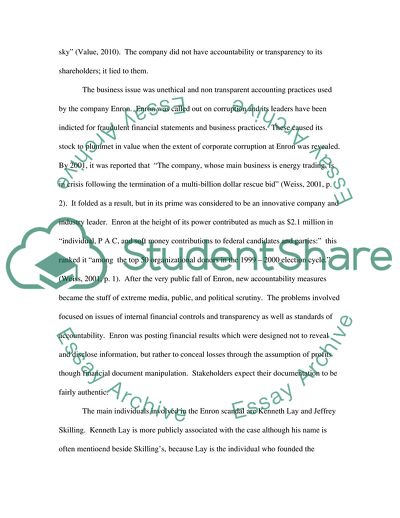Cite this document
(Enron Ethics Case Study Example | Topics and Well Written Essays - 2000 words, n.d.)
Enron Ethics Case Study Example | Topics and Well Written Essays - 2000 words. https://studentshare.org/ethics/1746452-enron-ethics
Enron Ethics Case Study Example | Topics and Well Written Essays - 2000 words. https://studentshare.org/ethics/1746452-enron-ethics
(Enron Ethics Case Study Example | Topics and Well Written Essays - 2000 Words)
Enron Ethics Case Study Example | Topics and Well Written Essays - 2000 Words. https://studentshare.org/ethics/1746452-enron-ethics.
Enron Ethics Case Study Example | Topics and Well Written Essays - 2000 Words. https://studentshare.org/ethics/1746452-enron-ethics.
“Enron Ethics Case Study Example | Topics and Well Written Essays - 2000 Words”. https://studentshare.org/ethics/1746452-enron-ethics.


